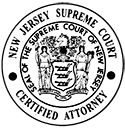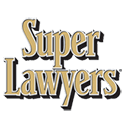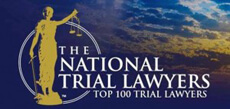5.40C- FAILURE TO WARN/INSTRUCT
(Approved 3/00; Revised 10/01)
Let me now discuss the law governing the plaintiff’s claim of failure to warn.
If a product fails to contain an adequate warning or instructions, it is defective. [Plaintiff] says the [Product] did not contain an adequate warning or instruction because [insert short factual description of plaintiff’s contention why the warning was inadequate]. [Defendant] says the [Product] did contain an adequate warning or instruction because [insert short factual description].
The [Defendant] as the manufacturer or seller of a product had a duty to provide adequate warnings or instructions about the dangers the [Product] may present. [Defendant] had this duty even if the [Product] were perfectly designed and manufactured. To decide the plaintiff’s failure to warn claim you must determine what warnings and instructions the defendant provided and whether those warnings and instructions were adequate.
Let’s talk about what a warning or instruction is. Warnings or instructions may consist of statements that a product should not be used at all under certain circumstances, that it should be used only in a particular way, or that it should be used with particular care. Warnings or instructions may be in the form of words, symbols or pictures. They must be in a form which will effectively convey the information essential to make the use of the product reasonably safe.
To be adequate, the warning or instruction must be the kind of warning or instruction which a reasonably prudent manufacturer or seller in the same or similar circumstances would have provided to people intended to use the product. Adequate information may be required to be given to others in the chain of distribution of the product such as from the manufacturer and the seller to the buyer, or from the manufacturer and the seller directly to the user.2 An adequate warning or instruction will communicate sufficient information on the dangers of the product and how to use the product safely. When deciding whether the information provided is adequate, you should take into account the characteristics of the people reasonably expected to use the product and ordinary common knowledge.
In deciding whether the warning or instruction given in this case was adequate, you must assume the [Name of Defendant Manufacturer/Seller] knew of the dangers of the [Product] at the time [Product] was sold/distributed. With that assumption you must then decide whether the [Defendant] acted in a reasonable, prudent manner in marketing the [Product] without any warnings/with the particular form of warning that was provided.
[Charge when applicable:]
In this case [Defendant] contends that [describe danger] was not knowable at the time the [Product] was manufactured/sold. If [Defendant] proves that the danger in question was not knowable by it at the time of manufacture or sale, then it had no duty to warn of the danger and cannot be held liable for failure to do so.4 In evaluating this defense of [Defendant], you may consider evidence relating to [Defendant’s] knowledge of the danger of the [Product]. A duty to warn arises if [Defendant] (the manufacturer/seller) actually knew or should have known of the need to issue a particular warning.
In determining what [Defendant] should have known, you must understand that the law requires a manufacturer/seller to keep reasonably familiar with and to know reliable information generally available or reasonably obtainable in the industry. In that regard, [Defendant] is deemed to be an expert in its field.5 This information may come from experts and literature in the field. Moreover, information from other sources such as complaints from users, sellers or distributors of an untoward effect of a product may be sufficient to require an appropriate warning.
[Charge when applicable:]
A manufacturer or seller such as [Defendant] may also have responsibility to warn purchasers and consumers of dangers discovered after the product was sold/distributed. This duty arises when subsequently obtained knowledge, both actual or constructive, was available either at the time of distribution or in sufficient time before the accident/injury so that an effective and reasonable supplemental warning could have been given. In this regard it is the defendant who must prove that the information about the danger was not reasonably available or obtainable either at the time of distribution or in sufficient time before the accident/injury.
To establish a claim of failure to warn, [Plaintiff] must prove all of the following elements by a preponderance (greater weight) of the credible evidence:
l. That the [Product] failed to contain an adequate warning/instruction.
2. That the failure to adequately warn/instruct existed before the [Product] left the control of the [Defendant].
3. [Use only when misuse or intentional alteration is an issue and use only applicable portion.] That when the accident happened the [Product] was not being misused, or it had not been substantially altered in a way that was not reasonably foreseeable.
[Plaintiff] must prove that at the time of the accident the [Product] was being used properly for its intended purposes or for an intended or reasonably foreseeable purpose. To prove this, plaintiff must show that the product was not being misused in a way that was neither intended nor was reasonably foreseeable. In this case, the [Defendant] contends that at the time of the accident the [Product] was being misused. [Set forth a brief factual description of this dispute.]
[Plaintiff] must also show that when he/she used the [Product], it had not been substantially altered since it left [Defendant’s] control. A substantial alteration is a change or modification made to the product after it was manufactured or sold which both alters the design or function of the product and has a significant or meaningful effect on the product’s safety when used.7 In this case the defendant contends that the [Product] was substantially altered. [Set forth a brief factual description of this dispute.
In considering this issue, you must determine whether there has been a subsequent misuse/abnormal use or substantial alteration to the [Product]. If you find that to exist, you must determine whether the misuse/abnormal use or substantial alteration was reasonably foreseeable at the time the product left the control of the [Defendant].
Reasonably foreseeable does not mean that the particular misuse/abnormal use or substantial alteration was actually foreseen or could have been actually foreseen by [Defendant] at the time the [Product] left his/her control.
This is a test of objective foreseeability. You must consider the general experience within the industry when the [Product] was manufactured, sold or distributed. Then decide whether a reasonably careful manufacturer, seller or distributor could have anticipated the misuse/abnormal use or substantial alteration of the [Product].8 If the alteration reasonably could have been anticipated, and if the alteration made the product not reasonably safe, the defendant is still responsible. [Plaintiff] has the burden to show that a typical manufacturer or seller of the product could foresee that the product would be altered or that despite the alteration the original defect was nonetheless a cause of the injury.
4. That the [Plaintiff] was a direct or reasonably foreseeable user, or a person who might reasonably be expected to come in contact with the [Product].10
5. That the [Plaintiff] would have followed an adequate warning/instruction if it had been provided.
[When defendant offers no evidence or insufficient evidence to rebut the heeding presumption, a directed verdict on this issue should be granted.]
[When defendant offers evidence sufficient to rebut the heeding presumption, charge as follows:]
In this case, [plaintiff’s name] claims that the [product’s name] was defective because there was no adequate warning/instruction. If you find that the [product’s name] was defective because adequate warning/instruction was not given, then you must decide whether the lack of an adequate warning/instruction was a proximate cause of the accident.
The [defendant’s name] has introduced evidence seeking to show that [plaintiff’s name] would not have read and followed an adequate warning/instruction even if one had been provided by the defendant.
You have to decide whether plaintiff would have read and heeded a warning/instruction had one been given or that he would not have read and heeded a warning/instruction had one been given.
Plaintiff has the burden to prove by a preponderance of the credible evidence that he/she would have followed an adequate warning/instruction if it had been provided.
6. That the failure to adequately warn/instruct was a proximate cause of the accident/injury.
Proximate cause means that the failure to warn/instruct was a substantial factor which singly, or in combination with another cause or causes, brought about the accident. [Plaintiff] need not prove that this accident could have been anticipated so long as it was foreseeable that some harm could result from the failure to warn/instruct. If an adequate warning/instruction would have reduced the risk of the occurrence of this accident, you may find that its absence was a contributing factor to the happening of this accident. If, on the other hand, the failure to warn/instruct does not add to the risk of the occurrence of this accident and therefore is not a contributing factor to the happening of the accident, then plaintiff has failed to establish that the failure to warn/instruct was a proximate cause of the accident.
[Instruction on intervening cause, where applicable:]
In this case the [Defendant] contends that [set forth defendant’s contention]was an intervening cause.
An intervening cause is the act of an independent agency which destroys the causal connection between the defect in the product and the accident. To be an intervening cause the independent act must be the immediate and sole cause of the accident. In that event, liability will not be established because the failure to warn/instruct is not a proximate cause of the injury. However, the defendant would not be relieved from liability for its failure to warn/instruct by the intervention of acts of third persons, if those acts were reasonably foreseeable. Where the intervention of third parties is reasonably foreseeable, then there is a substantial causal connection between the product defect and the accident. You must determine whether the [alleged intervening cause] was an intervening cause that destroyed the causal connection between the failure to warn and the accident. If it did, then the failure to warn/instruct was not a proximate cause of the accident.
If [Plaintiff] has proven each element by a preponderance of the credible evidence, then you must find for [Plaintiff].
If, on the other hand, [Plaintiff] has failed to prove any of the elements, then you must find for the defendant.
[When there is a jury question dealing with defendant’s affirmative defense or contributory/comparative negligence, the next three questions are applicable.]
7. Was the plaintiff negligent?15
[Defendant] contends that [Plaintiff] was at fault for the happening of the accident. [Briefly describe contention.]
To win on this defense, [Defendant] must prove that [Plaintiff] voluntarily and reasonably proceeded to encounter a known danger and that [Plaintiff’s] action was a proximate cause of the accident. The failure of [Plaintiff] to discover inadequate warnings or instructions or to guard against the possibility of inadequate warnings or instructions is not a defense. Rather, to win on this defense, [Defendant] must prove that [Plaintiff] had actual knowledge of the particular danger presented by the [Product] and that [Plaintiff] knowingly and voluntarily encountered the risk.
8. Was plaintiff’s negligence a proximate cause of the injury?
[See Chapter 6 which deals with Proximate Cause.]
9. Comparative Fault; Apportionment of Fault; Ultimate Outcome.
If plaintiff and defendant both are found to be at fault which is a proximate cause of the accident/injury, the jury must compare their fault in terms of percentages.



